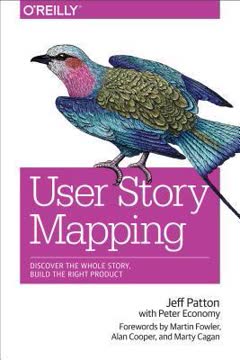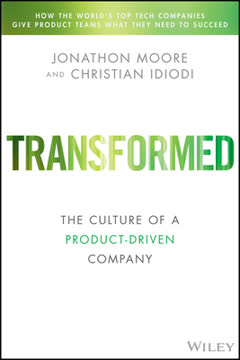Key Takeaways
1. Product Discovery: Separate Good Ideas from Bad Quickly
"The purpose of product discovery is to address these critical risks: Will the customer buy this, or choose to use it? (Value risk) Can the user figure out how to use it? (Usability risk) Can we build it? (Feasibility risk) Does this solution work for our business? (Business viability risk)"
Rapid experimentation is key. Product discovery is about quickly validating ideas to determine which ones are worth pursuing. This process involves addressing four critical risks: value, usability, feasibility, and business viability. By focusing on these areas, product teams can efficiently separate promising concepts from those unlikely to succeed.
Techniques for effective discovery:
- Customer interviews
- Prototyping (user, feasibility, and live-data)
- Usability testing
- A/B testing
- Concierge tests
Embrace failure as learning. Recognize that many ideas won't work out, and that's okay. The goal is to fail fast, learn quickly, and iterate towards successful solutions. This approach minimizes wasted time and resources on concepts that don't resonate with customers or align with business goals.
2. Empowered Product Teams: The Key to Successful Products
"We need teams of missionaries, not teams of mercenaries."
Autonomy breeds innovation. Empowered product teams are given clear objectives and the freedom to determine the best solutions. This autonomy fosters a sense of ownership and accountability, leading to more creative and effective problem-solving.
Key characteristics of empowered teams:
- Cross-functional composition (product manager, designer, engineers)
- Co-location when possible
- Clear objectives and key results (OKRs)
- Authority to make decisions
- Accountability for outcomes, not just output
Culture of trust and experimentation. Leadership must create an environment where teams feel safe to take calculated risks and learn from failures. This culture shift is essential for moving from a top-down, feature-focused approach to one that emphasizes solving customer problems and delivering business value.
3. Product Vision and Strategy: Align Teams and Drive Innovation
"The product vision describes the future we are trying to create, typically somewhere between two and five years out."
Inspire and guide. A compelling product vision paints a picture of the future you want to create, inspiring teams and stakeholders to work towards a common goal. The product strategy outlines the path to achieve that vision, typically through a series of product/market fits.
Components of effective vision and strategy:
- Vision: Aspirational, long-term (2-5 years)
- Strategy: Focused, sequential approach to markets or user segments
- Product principles: Guidelines for decision-making
Communicate relentlessly. Continuously share and reinforce the vision and strategy throughout the organization. This alignment ensures that all teams understand how their work contributes to the bigger picture and helps prioritize efforts across the company.
4. Customer-Centric Approach: Solve Real Problems for Users
"Fall in love with the problem, not with the solution."
Understand user needs deeply. Successful products are built on a foundation of deep customer understanding. Product managers must become experts on their users' pain points, behaviors, and desires. This knowledge informs every aspect of product development.
Techniques for customer insight:
- Regular customer interviews
- Observation and contextual inquiry
- Analytics and user behavior data
- Customer discovery programs
Focus on outcomes, not features. Instead of building a list of features, concentrate on the problems you're solving for users. This approach allows for more creative solutions and ensures that the product delivers real value to customers.
5. Continuous Learning: Iterate Rapidly with Prototypes and Testing
"To set your expectations, teams competent in modern discovery techniques can generally test on the order of 10–20 iterations per week."
Embrace rapid prototyping. Use various types of prototypes (user, feasibility, live-data) to quickly test ideas and gather feedback. This approach allows teams to learn and iterate much faster than traditional development cycles.
Types of testing:
- Usability testing
- Value testing (qualitative and quantitative)
- Feasibility testing
- Business viability testing
Create a learning culture. Encourage teams to share insights openly and frequently. Regular product learning updates can help disseminate knowledge across the organization and reinforce the importance of continuous discovery.
6. Cross-Functional Collaboration: Essential for Holistic Product Development
"Functionality, design, and technology are inherently intertwined."
Break down silos. Successful product development requires close collaboration between product management, design, and engineering. This integration ensures that all aspects of the product are considered throughout the development process.
Benefits of cross-functional teams:
- More innovative solutions
- Faster decision-making
- Better alignment on goals and constraints
- Improved product quality
Shared learning and ownership. Involve engineers and designers in customer interactions and discovery activities. This shared experience builds empathy for users and creates a sense of collective ownership over the product's success.
7. Data-Driven Decision Making: Balance Quantitative and Qualitative Insights
"Data beats opinions."
Leverage analytics. Use data to inform product decisions, measure progress, and identify opportunities. Modern product managers must be comfortable working with various types of analytics and drawing insights from them.
Key types of analytics:
- User behavior
- Business metrics
- Financial performance
- Operational costs
- Customer sentiment
Combine quantitative and qualitative data. While metrics are crucial, they don't tell the whole story. Balance quantitative data with qualitative insights from user research to gain a comprehensive understanding of your product's performance and opportunities.
8. Business Viability: Ensure Solutions Work for Customers and the Company
"The solution must also work for your business."
Consider all stakeholders. Product managers must ensure that solutions not only solve customer problems but also align with business goals and constraints. This involves understanding and addressing the concerns of various stakeholders across the organization.
Key business viability considerations:
- Financial impact
- Marketing and sales alignment
- Legal and compliance requirements
- Operational feasibility
- Strategic fit
Test business viability early. Incorporate business viability testing into your discovery process. Engage with stakeholders during prototyping and testing phases to identify and address potential issues before significant resources are invested.
9. Stakeholder Management: Build Trust and Alignment
"Success in terms of stakeholder management means that your stakeholders respect you and your contribution."
Develop strong relationships. Invest time in understanding stakeholders' perspectives, constraints, and goals. Regular one-on-one meetings and open communication build trust and facilitate better collaboration.
Strategies for effective stakeholder management:
- Demonstrate deep product and business knowledge
- Share learnings and insights generously
- Preview solutions during discovery
- Use data to support decisions and recommendations
Manage expectations. Be clear about the discovery process and the iterative nature of product development. Help stakeholders understand the difference between commitments and experiments, and involve them appropriately in each stage.
10. Scaling Product Organizations: Maintain Innovation as You Grow
"If you stop innovating, you will die."
Preserve agility. As organizations grow, it's crucial to maintain the ability to innovate rapidly. Avoid introducing processes that stifle creativity and slow decision-making.
Techniques for scaling product organizations:
- Clear product vision and strategy
- Empowered, autonomous product teams
- Strong product culture
- Effective stakeholder management
- Continuous learning and sharing of insights
Balance innovation and optimization. While it's important to continue improving existing products, allocate resources for exploring new opportunities and disruptive innovations. This balanced approach helps companies stay competitive and adapt to changing markets.
Last updated:
FAQ
What's Inspired: How to Create Tech Products Customers Love about?
- Focus on Product Management: The book emphasizes the critical role of product management in developing technology products that fulfill customer needs. It details the responsibilities of product managers, designers, and engineers.
- Lessons from Top Companies: Marty Cagan shares insights from successful tech companies, explaining how they achieve product/market fit and maintain innovation.
- Holistic Product Development: Cagan advocates for integrating technology, design, and business strategy to create products that customers love, essential for modern product management.
Why should I read Inspired: How to Create Tech Products Customers Love?
- Expert Insights: Authored by Marty Cagan, a seasoned expert, the book offers valuable insights from his experience with companies like eBay and Netscape.
- Practical Frameworks: It provides actionable frameworks and techniques for product discovery and delivery, useful for product managers at any level.
- Cultural Shift: Cagan emphasizes the need for a cultural shift to prioritize user needs and foster innovation, crucial for product development.
What are the key takeaways of Inspired: How to Create Tech Products Customers Love?
- Empowered Product Teams: Successful products are built by cross-functional teams that include product managers, designers, and engineers working collaboratively.
- Focus on Discovery: Product discovery is crucial for validating ideas and understanding customer needs before development.
- Continuous Learning: The book promotes a culture of continuous learning and experimentation, leading to better outcomes and innovation.
What is the product discovery process described in Inspired: How to Create Tech Products Customers Love?
- Collaborative Effort: Involves product managers, designers, and engineers working together to identify customer needs and validate ideas.
- Risk Assessment: Focuses on addressing value, usability, feasibility, and business viability risks to make informed decisions.
- Prototyping and Testing: Emphasizes using prototypes to test ideas with real users, allowing for feedback and iteration before full-scale development.
What are the roles and responsibilities of a product manager according to Inspired: How to Create Tech Products Customers Love?
- Customer Knowledge: Product managers must deeply understand customer needs, pain points, and behaviors to inform product decisions.
- Data-Driven Decisions: They should be comfortable with data and analytics, using insights to guide decisions and measure success.
- Business Acumen: Understanding the business context, including market dynamics and competition, is crucial for aligning product goals with business objectives.
What is the significance of product vision and strategy in Inspired: How to Create Tech Products Customers Love?
- Guiding Direction: The product vision sets long-term goals and aligns team efforts towards a common objective.
- Strategic Roadmap: Outlines steps and milestones to achieve the vision, helping prioritize initiatives and allocate resources.
- Market Focus: Emphasizes focusing on one target market or persona at a time to deliver meaningful value and achieve product/market fit.
What are the common pitfalls in product management highlighted in Inspired: How to Create Tech Products Customers Love?
- Waterfall Processes: Warns against long development cycles and delayed feedback, advocating for agile methodologies.
- Stakeholder-Driven Roadmaps: Critiques roadmaps that prioritize internal demands over customer needs, leading to products that don't resonate.
- Lack of Empowerment: Highlights the issue of teams lacking autonomy, stressing the need for ownership to drive innovation.
What is the OKR technique mentioned in Inspired: How to Create Tech Products Customers Love?
- Objectives and Key Results: A goal-setting framework that defines clear objectives and measurable key results, aligning team efforts with business goals.
- Focus on Outcomes: Encourages prioritizing business outcomes over tasks, promoting value delivery to customers.
- Transparency and Alignment: Enhances organizational transparency, ensuring all teams understand their contributions to overall objectives.
How does Inspired: How to Create Tech Products Customers Love address the culture of product management?
- Missionaries vs. Mercenaries: Emphasizes passion and commitment within teams, fostering a sense of ownership and purpose.
- Continuous Discovery and Learning: Advocates for a culture of experimentation and learning, essential for innovation.
- Empowerment and Autonomy: Stresses the need for teams to be empowered and autonomous, leading to higher motivation and better outcomes.
What are some best practices for product teams outlined in Inspired: How to Create Tech Products Customers Love?
- Cross-Functional Collaboration: Successful teams include product managers, designers, and engineers working closely together.
- Rapid Prototyping: Encourages testing ideas quickly and gathering user feedback to validate concepts.
- Customer-Centric Approach: Emphasizes understanding customer needs and pain points to drive product decisions.
What are some specific methods discussed in Inspired: How to Create Tech Products Customers Love?
- Opportunity Assessment Technique: Clarifies business objectives, key results, customer problems, and target market before discovery.
- Customer Letter Technique: Involves writing a hypothetical letter from a satisfied customer to focus on benefits.
- Discovery Sprint Technique: A one-week time box for rapid ideation, prototyping, and user validation.
How does Inspired: How to Create Tech Products Customers Love suggest teams should handle feasibility risks?
- Early Involvement of Engineers: Involves engineers early to assess feasibility and identify technical challenges.
- Feasibility Prototypes: Recommends creating quick, low-cost prototypes to test technical viability.
- Collaborative Problem-Solving: Encourages product managers and engineers to work together on implementation solutions.
Review Summary
Inspired is highly regarded by most readers as an essential guide for product managers. Praised for its practical advice, clear explanations of roles and responsibilities, and emphasis on product discovery and prototyping. Many find it valuable for both new and experienced PMs, offering insights on team building, customer understanding, and product development processes. Some criticize it for being outdated or lacking specific examples, but overall, it's considered a fundamental resource in the field of product management.
Similar Books










Download PDF
Download EPUB
.epub digital book format is ideal for reading ebooks on phones, tablets, and e-readers.






